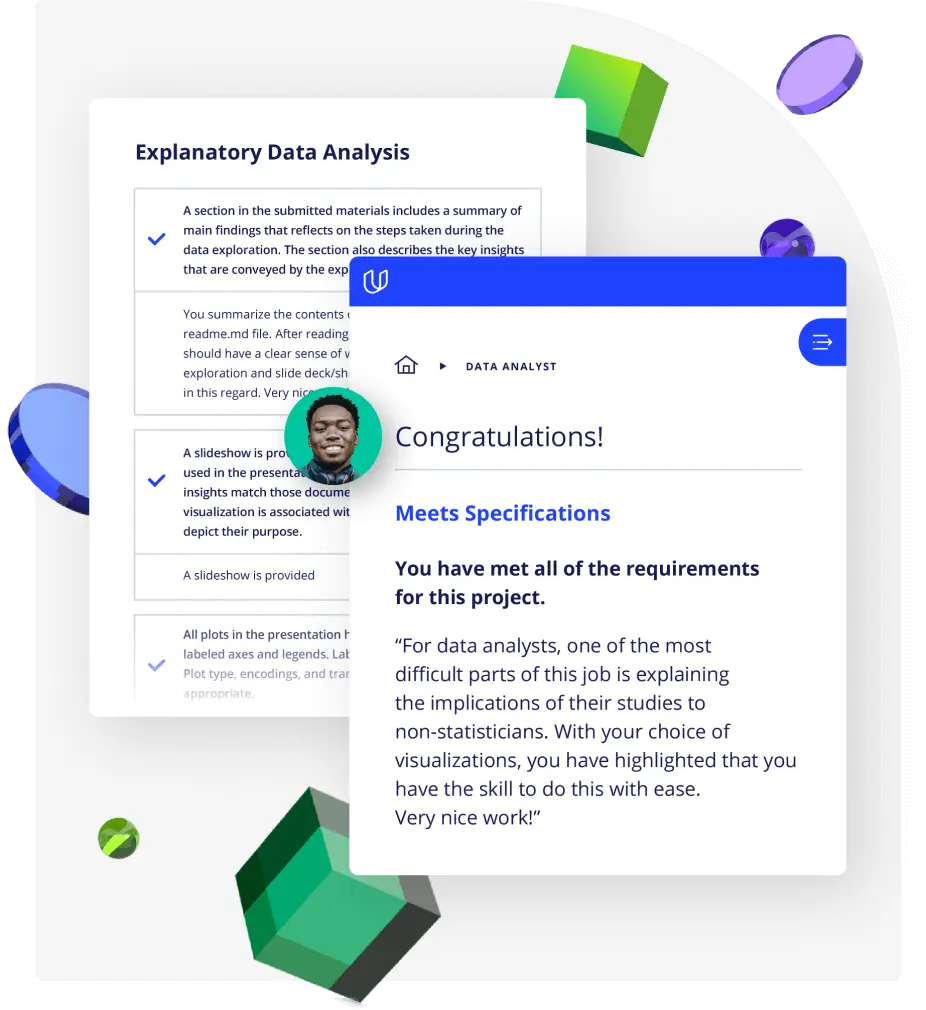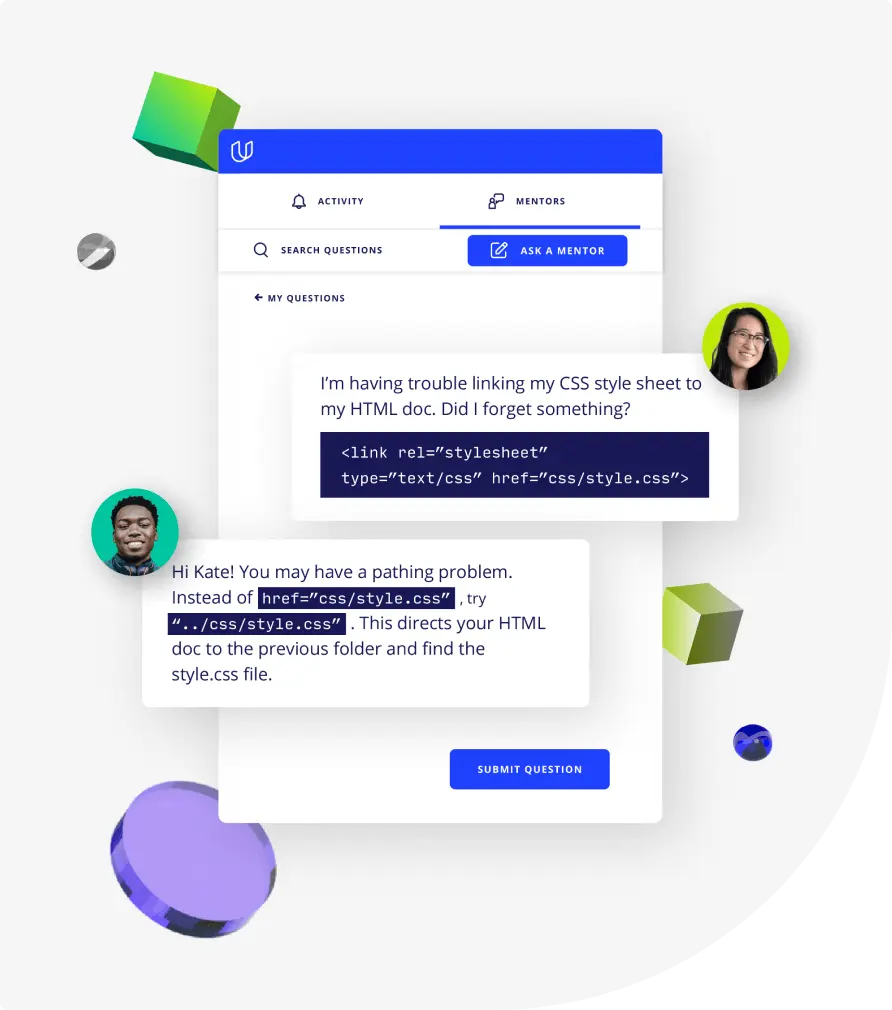Lesson 1
Welcome to Machine Learning
Meet with Sebastian and Katie to discuss machine learning.

Course
This class will teach you the end-to-end process of investigating data through a machine learning lens, and you'll apply what you've learned to a real-world data set.
This class will teach you the end-to-end process of investigating data through a machine learning lens, and you'll apply what you've learned to a real-world data set.
Intermediate
Last Updated March 7, 2022
Prerequisites:
No experience required
Lesson 1
Meet with Sebastian and Katie to discuss machine learning.
Lesson 2
Learn about classification, training and testing, and run a naive Bayes classifier using Scikit Learn.
Lesson 3
Build an intuition about how support vector machines (SVMs) work and implement one using scikit-learn.
Lesson 4
Learn about how the decision tree algorithm works, including the concepts of entropy and information gain.
Lesson 5
In this mini project, you will extend your toolbox of algorithms by choosing your own algorithm to classify terrain data, including k-nearest neighbors, AdaBoost, and random forests.
Lesson 6
Find out about the Enron data set used in the next lessons and mini-projects.
Lesson 7
See how we can model continuous data using linear regression.
Lesson 8
Sebastian discusses outlier detection and removal.
Lesson 9
Learn about what unsupervised learning is and find out how to use scikit-learn's k-means algorithm.
Lesson 10
Learn about feature rescaling and find out which algorithms require feature rescaling before use.
Lesson 11
Katie discusses when and why to use feature selection, and provides some methods for doing this.
Lesson 12
Find out how to use text data in your machine learning algorithm.
Lesson 13
Learn about data dimensionality and reducing the number of dimensions with principal component analysis (PCA).
Lesson 14
Learn more about testing, training, cross validation, and parameter grid searches in this lesson.
Lesson 15
How do we know if our classifier is performing well? Katie discusses different evaluation metrics for classifiers in this lesson.
Lesson 16
Spend some time reflecting on the course material with Sebastian and Katie!
Lesson 17

Instructor

Founder and Executive Chairman, Udacity
As the Founder and Chairman of Udacity, Sebastian's mission is to democratize education by providing lifelong learning to millions of students worldwide. He is also the founder of Google X, where he led projects including the Self-Driving Car, Google Glass, and more.
Combine technology training for employees with industry experts, mentors, and projects, for critical thinking that pushes innovation. Our proven upskilling system goes after success—relentlessly.

Demonstrate proficiency with practical projects
Projects are based on real-world scenarios and challenges, allowing you to apply the skills you learn to practical situations, while giving you real hands-on experience.
Gain proven experience
Retain knowledge longer
Apply new skills immediately

Top-tier services to ensure learner success
Reviewers provide timely and constructive feedback on your project submissions, highlighting areas of improvement and offering practical tips to enhance your work.
Get help from subject matter experts
Learn industry best practices
Gain valuable insights and improve your skills
3 weeks
, Intermediate
(256)
2 months
, Intermediate
(235)
3 months
, Intermediate
4 weeks
, Intermediate
Intermediate
4 weeks
, Intermediate
(909)
4 months
, Intermediate
11 hours
(87)
4 months
, Advanced
4 weeks
, Intermediate
3 weeks
, Advanced
1 hour
, Discovery
Beginner